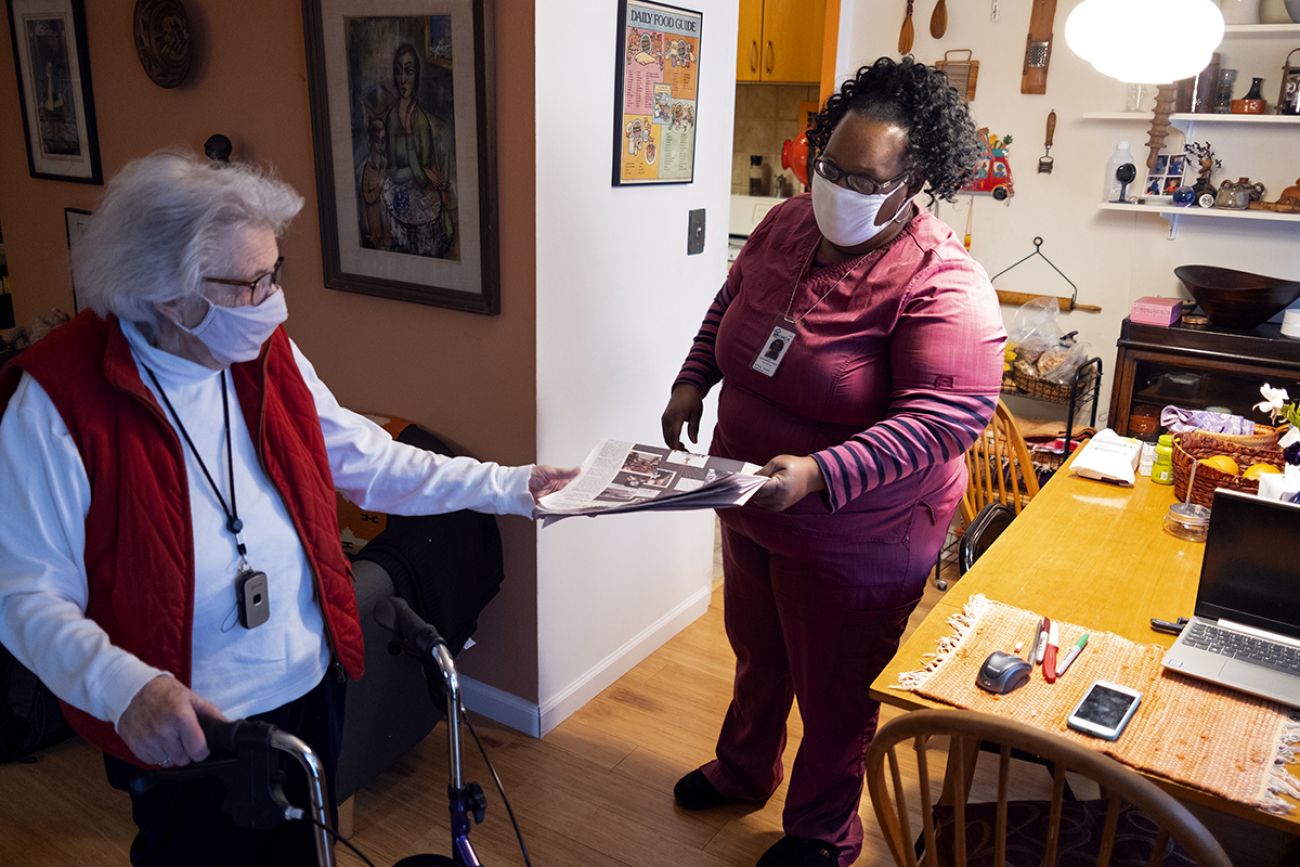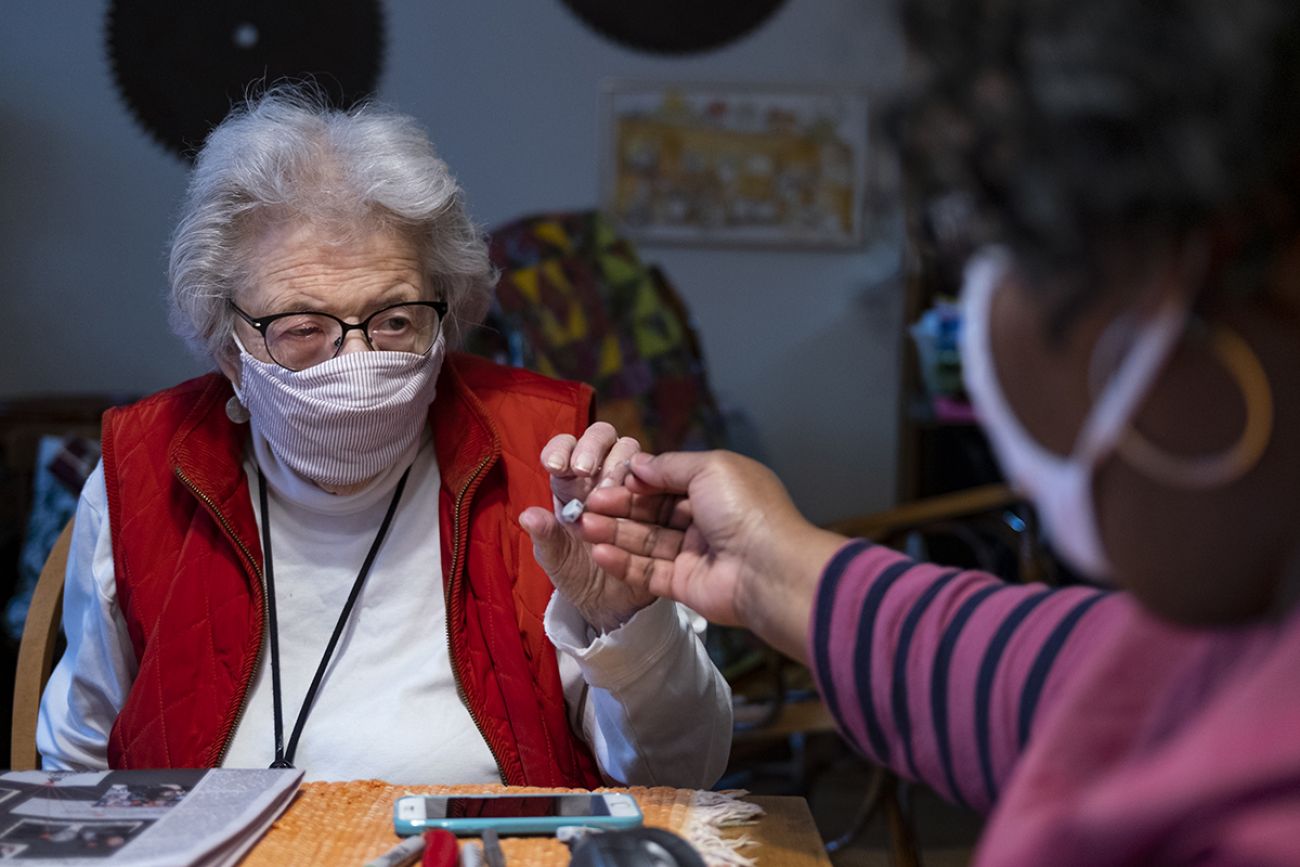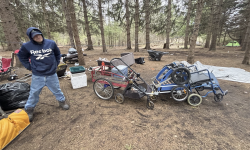Innovation, bonuses may help curb Michigan’s home health care shortage

Like home care agencies across the country, New York City’s Cooperative Home Care Associates faced a nagging challenge: How to hire and retain quality direct care workers?
Starting small, in 1985, the agency has become a nationwide model for what experts nationwide say is a burgeoning crisis in home health workers. From an initial staff of 12 home health aides, it now employs more than 2,000. And unlike the vast majority of home care agencies, it’s employee-owned: Workers have the option of buying into the company.
Workers have comprehensive health care insurance and subsidies to pay for college courses and career advancement. The cooperative puts new workers through a four-week training program that is a rarity among home care agencies, funded through a combination of state and federal grants and philanthropic grants.
The cooperative guarantees experienced aides at least 30 hours of work at $15 an hour, plus benefits including a pension that are worth another $4 an hour. The result: A loyal workforce, with an annual attrition rate of about 18 percent to 24 percent, far below the industry standard of 82 percent.
“Building support is right at the core for recruiting and retaining workers,” said Adria Powell, president and CEO of Cooperative Home Care Associates. “We’ve got to build a quality job for workers to be able to build quality care.”
The cooperative, though, remains much more the exception than the rule, as agencies heavily reliant on Medicaid funding struggle to retain workers for jobs that typically pay $12 to $15 an hour.
Related:
- Shortage of paid caregivers keeps family members up at night, hoping for 'something sustainable'
- As Michigan ages, a shortage in health care workers explodes into a crisis
In an industry that employs about 2.4 million workers, there are only 11 home care cooperatives nationwide. They employ 2,600 workers, just 0.1 percent of the nation’s home care workforce.
Michigan agencies instead are relying instead on pay raises, bonuses and internship programs to help curb the shortage and attract new workers to the field.
“We are all going to get older. Investing in these workers is investing in our own future,” said Stacey Dudewicz, a coordinator with the Region VII Area on Aging in Bay City.
“We need people to be in this field to do this work.”

‘Helping people is what I do’
In New York City, the cooperative helps seniors like Kathryn Goldman, 89, who lives alone in a third-floor apartment not far from Central Park.
Six days a week, home health worker Valerie McBride-Johnson comes for six-hour shifts, helping with bathing, cooking, cleaning and transportation to doctor appointments — as well as offering tips to Goldman when she’s stumped on her computer. Her assistance has helped Goldman stay in the apartment she’s lived in since 1972.
On Monday, McBride-Johnson braved more than a foot of snow to work at Goldman’s apartment as a blizzard blanketed the city.
“I certainly think she is remarkable,” Goldman said of McBride-Johnson. “It’s not easy when life changes, as you get older. It’s really important to get somebody like her.”
McBride-Johnson has been a home care worker nearly 30 years, the last 13 with the cooperative, which she said provides support when she reaches out about difficult clients.
“If there’s a situation where a client doesn’t want to take their medication or go to the doctor, or doesn’t want to eat, I can talk to my coordinator or the nurses. They are very helpful.”
The cooperative also offers paths to career advancement, which is preparing Ramona Santos to become a nurse. She was hired three months after she came to New York in 2017 from the Domincan Republic, speaking virtually no English.
After a year as a home care worker, she now conducts orientation sessions for new workers in Spanish, while working home care on the weekends, and plans to take college courses in nursing this spring.
“From my first day I said, ‘This is my place.’ They make me feel like I can complete all my goals,” said Santos, 23.
“Helping people is what I want to do.”
But the cooperative is unique because it was well-funded from the start. The agency’s CEO, Powell, said it received about $500,000 in startup funds from the Community Service Society of New York, a community-based nonprofit anti-poverty organization.
That sort of money isn’t available to many home care agencies, the trade group PHI noted.
“Overall, these figures indicate the inherent difficulty in launching home care cooperatives and bringing them to scale,” PHI stated.
“But they also suggest an opportunity for leadership for entities committed to overcoming these challenges through collaboration and innovation.”

Other solutions
In Michigan, other initiatives are chipping away at the shortage of direct care workers.
In a 10-county region in the central Lower Peninsula, the Region VII Area Agency on Aging uses cash bonuses to encourage home care workers to stick with the job.
The agency in fiscal 2018 offered direct care agencies a chance to apply for bonus grants of $1,000 per employee, up to five employees. Eighty direct care workers from 18 agencies got bonuses, given to those who had been on the job at least a year and had a good work record.
A year later, nearly all the workers were still on the job. The agency offered 71 $1,000 cash bonuses in fiscal 2019 with similar results.
“It is an acknowledgement for all the hard work they do. I had the chance to deliver checks to some of the workers who received them,” Dudewicz said.
“They would sigh and say, ‘Thanks. It’s nice that somebody thinks I did a job.’”
In rural southwestern Michigan, the Region IV Area Agency on Aging in 2019 launched a fund to assist agency home care workers with emergency needs ranging from auto repair to child care costs.
Since many home care workers live in households at or near the poverty line, advocates say, aid overcoming these financial hurdles can be key to their long-term employment.
“We recognize that this is an underpaid and undervalued workforce,” said Christine Vanlandingham, chief operating officer for the agency.
“There are some barriers that are low-hanging fruit to us, but are huge barriers to the workforce. Maybe they have a dead battery and they can’t get to work. Or they can’t pay their car insurance. A lot of it is about transportation, especially in rural Michigan.
“Often it’s emergency child care issues. It could be cell phone minutes ─ it’s really as unique as the individual.”
In its last fiscal year, Vanlandingham said, the agency invested $682,000 in extra assistance for home care workers, that included not only emergency expenses but also personal protective equipment and added hazard pay for workers who were in direct contact with COVID-19 clients.
“As a society, we need to value this work. We need to make it sustainable, so they can do it for a lifetime,” Vanlandingham said.
At Grand Ledge High School outside Lansing, a handful of students got an introduction to the world of home care through a course begun in the fall of 2019 that encompasses everything from CPR to the basics of aging to proper techniques helping a client shower or climb out of a tub.
Michigan State University gerontologist Clare Luz, who was instrumental in establishing the program, sees it as a potential model for building a larger base of future home care workers.
“Yes, we have to increase wages and training, but I preach all the time that I don’t think any of this is going to work unless we engage in cultural change, and not only value the elderly and people with disabilities, but the people who care for them.”
Planning for the pilot program was funded by a $100,000 grant from the Michigan Health Endowment Fund, a Lansing-based health care foundation, with instruction provided by nurses with a specialty in geriatrics.
Luz said it was interrupted by the shutdown of Michigan schools in March, barring students from completing the final phase of the course, where they were to shadow home care workers on their job.
If COVID-19 is under control by then, Luz hopes to restart the program this fall.
“We are really hopeful this will continue,” she said.
This story was produced through the New York & Michigan Solutions Journalism Collaborative, a partnership of news organizations and universities dedicated to rigorous and compelling reporting about successful responses to social problems. The group is supported by the Solutions Journalism Network.
The collaborative’s first series, Invisible Army: Caregivers on the Front Lines, focuses on potential solutions to challenges facing caregivers of older adults.
See what new members are saying about why they donated to Bridge Michigan:
- “In order for this information to be accurate and unbiased it must be underwritten by its readers, not by special interests.” - Larry S.
- “Not many other media sources report on the topics Bridge does.” - Susan B.
- “Your journalism is outstanding and rare these days.” - Mark S.
If you want to ensure the future of nonpartisan, nonprofit Michigan journalism, please become a member today. You, too, will be asked why you donated and maybe we'll feature your quote next time!




